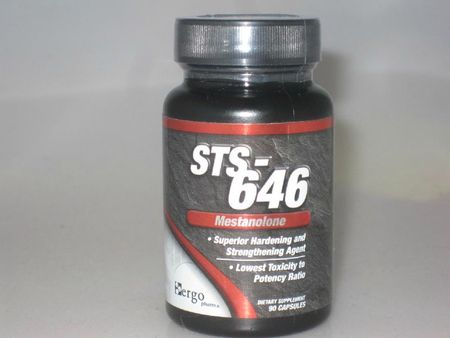Mestanolone (STS646 )
 Methyldihydrotestosterone (methyl-DHT; 17alpha-methyl-17beta-hydroxy 5alpha-androstane-3-on (mestanolone) is a steroid that has characteristics similar to those of DHT (dihydrotestosterone), but unlike DHT is orally bioavailable [1]. Methyl-DHT was the second most commonly used steroid by German athletes in decades past, who were among the best in the world largely because of widespread steroid use [2]. There is comparatively little information, either scientific or anecdotal, on methyl-DHT, although there is a wealth of information on DHT. This article will discuss the information on methyl-DHT and what can be expected from this compound.
Methyldihydrotestosterone (methyl-DHT; 17alpha-methyl-17beta-hydroxy 5alpha-androstane-3-on (mestanolone) is a steroid that has characteristics similar to those of DHT (dihydrotestosterone), but unlike DHT is orally bioavailable [1]. Methyl-DHT was the second most commonly used steroid by German athletes in decades past, who were among the best in the world largely because of widespread steroid use [2]. There is comparatively little information, either scientific or anecdotal, on methyl-DHT, although there is a wealth of information on DHT. This article will discuss the information on methyl-DHT and what can be expected from this compound.
One common way of characterizing steroids is by their relative anabolic (muscle-building) and androgenic effects. Androgenic effects refer primarily to secondary sex characteristics: increased body hair, deeper voice, balding, and so on. Androgenic compounds characteristically also have strong psychological effects, such as increased aggressiveness and concentration. Among bodybuilders, highly androgenic compounds are commonly used pre-contest or during cutting cycles for increasing muscle hardness and decreasing water retention and also to provide stimulation and increase concentration and performance in the gym. They also typically have anti-estrogenic effects.
The anabolic and androgenic effects of methyl-DHT were compared to testosterone and methyltestosterone in some early animal studies [1]. In tests of its androgenic potency (total of five tests), methyl-DHT ranged from 20-255% as androgenic as testosterone or testosterone propionate, with a per study average of 70%. In terms of anabolic effects relative to testosterone, the range was 25-105% with an average at 55%. One study also compared the effects of methyl-DHT to methyltestosterone, and it measured as ~60% as androgenic and 25% as anabolic. The large differences in these values are due to multiple differences in experimental design, not to mention the problems with extrapolating animal research to humans, but this research does give a general idea of what the potency and effects of this compound might be.